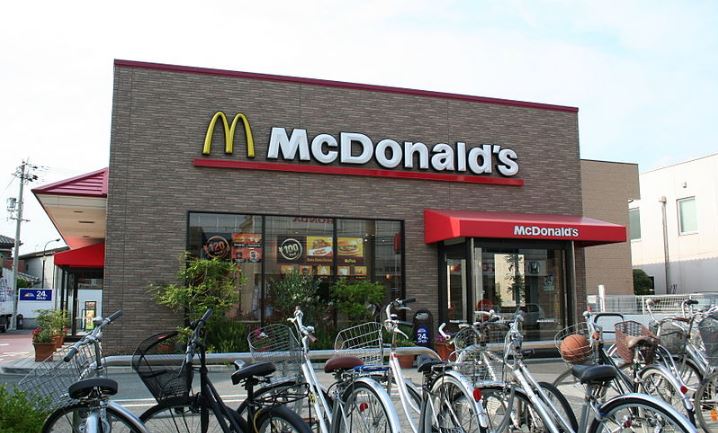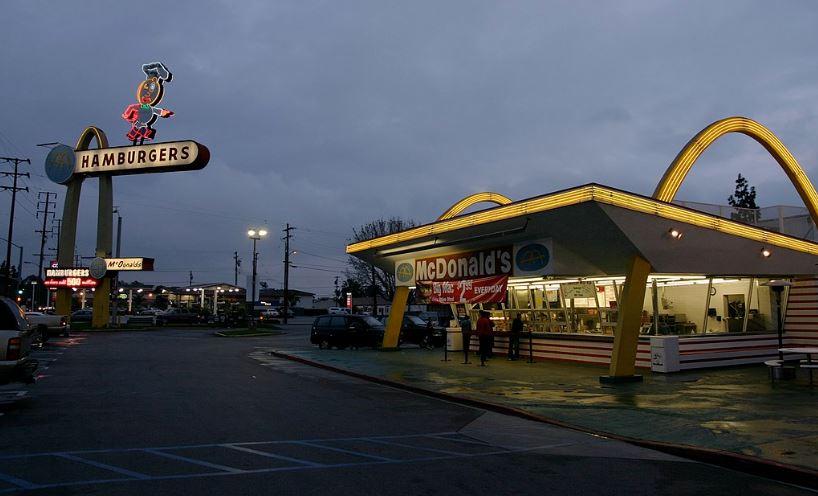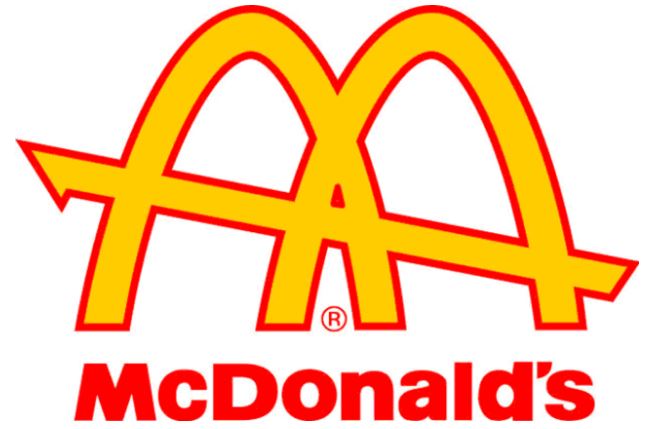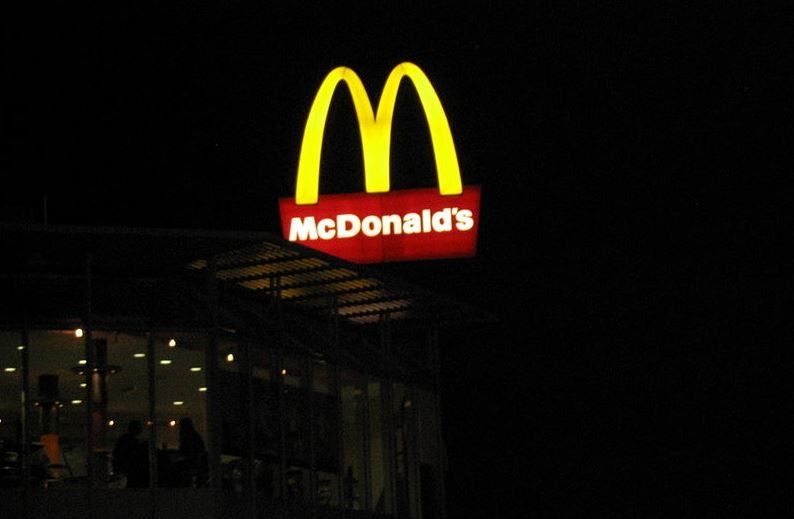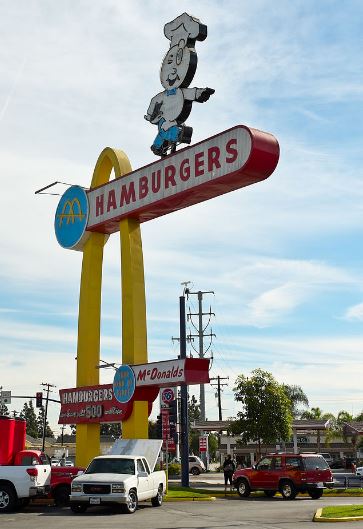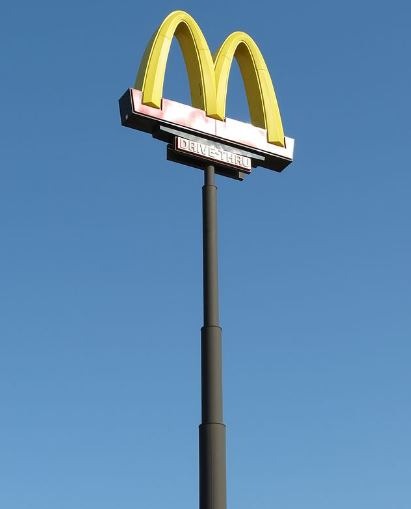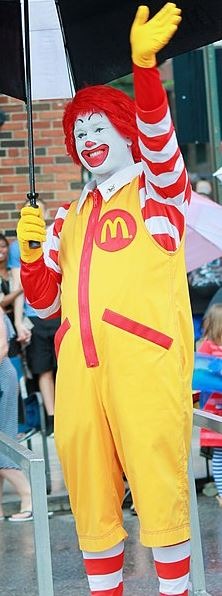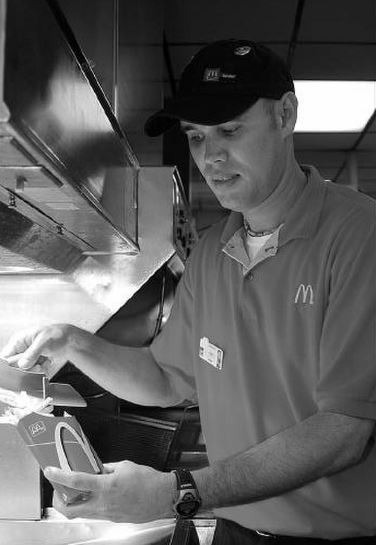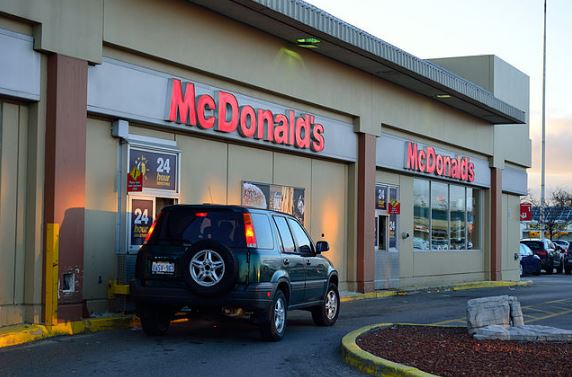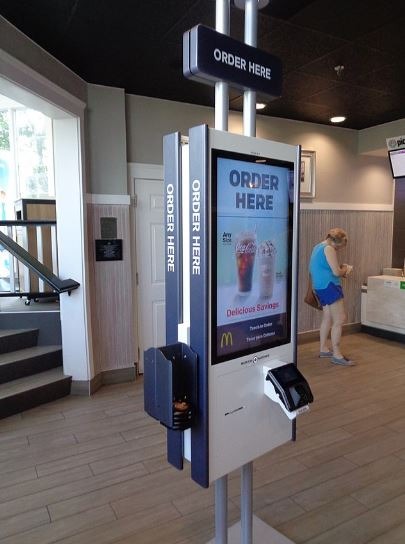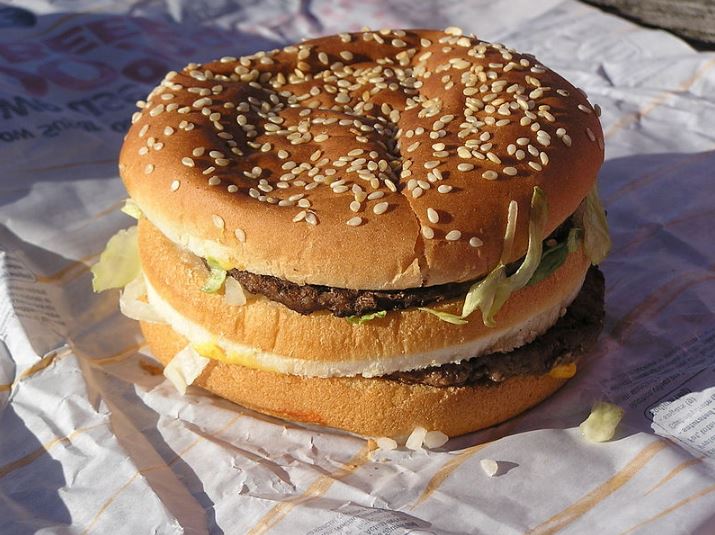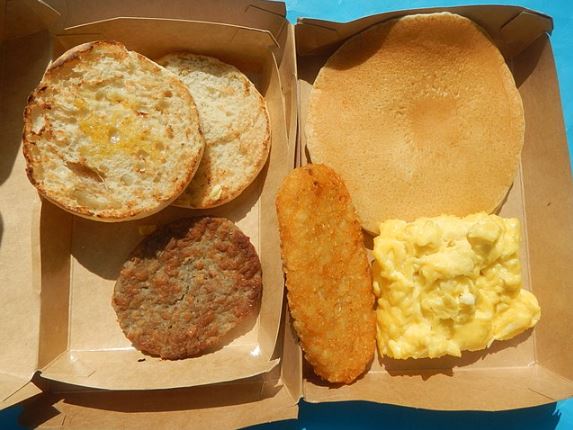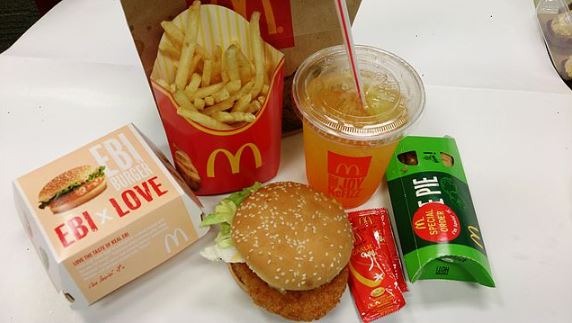It’s as clear as a bell – McDonald’s is the biggest fast-food restaurant chain in the world today. Thanks mainly to its strong focus on customer service, response to competition, and marketing and branding strategies, McDonald’s has weathered competition (and some controversy) and retains its top position in the world of fast food.
So much has changed about McDonald’s. Since milkshake machine salesman Ray Kroc opened the first McDonald’s in 1955, the restaurant has evolved from a small barbecue shack to a global fast-food empire.
From the restaurant design to the menu to the packaging, each iteration looks quite different from another. They’re only some of the many proofs that McDonald’s, as a global brand, continues experimenting and evolving to meet the increasing customer demands and challenges of the fast-food industry.
A short history of McDonald’s
McDonald’s is truly one of the most recognizable brands today. With its iconic golden arches logo gracing their restaurants in more than 115 countries, McDonald’s is so ubiquitous that people think it’s always there.
But the truth is, of course, that it hasn’t been there, as McDonald’s was founded in 1940 in San Bernardino, California. The founders, brothers Richard and Maurice McDonald, named the restaurant “MacDonald’s Bar-B-Que.” The original restaurant offered 25 items on its menu, among them burgers.
But when the brothers realized that the burgers outsold barbecues, they decided to simplify their menu, which included hamburgers and cheeseburgers.
The restaurant became successful due to the self-service counter, besides the food and its affordability. Because of this, there was no need for a waiter or waitress. The burgers were cooked ahead of time, wrapped in paper, and kept warm, which meant that customers received their orders on time.
Ray Kroc, a milkshake maker salesman, was impressed by McDonald’s efficiency. As the restaurant’s first franchisee agent, he opened his first McDonald’s restaurant in Des Plaines, Illinois, in 1955. It now operates as a McDonald’s museum. That same year, Kroc founded the McDonald’s System, Inc., which would become McDonald’s Corporation we know today.
Unlike the McDonald’s brothers, who were happy with their business, Kroc had more ambitious plans of expanding the McDonald’s brand. His goal was to put a McDonald’s restaurant in every US state, and a lot more, something he would eventually do.
In 1961, Kroc bought the McDonald’s brothers out for $2.7 million, which meant he now owned the exclusive brand rights to the McDonald’s name and all McDonald’s locations. And the rest, as they say, is history.
Kroc retired from running the McDonald’s business in 1974. By the time of his death a decade later, the chain had 7,500 outlets in the US and 31 countries and territories.
Today, McDonald’s has sold hundreds of billions of burgers during its many decades of operation. According to Statista, McDonald’s generated total revenue of US$19.21 billion (including US$7.66 income from its US operations) in 2020. However, that figure pales compared to its revenues the years prior, probably due to the Covid-19 pandemic. But the figures aren’t so bad, which means McDonald’s more than just survived the pandemic, which otherwise crippled many businesses.
McDonald’s restaurant design history
The first McDonald’s restaurants appeared drastically different than most McDonald’s branches today.
The picture below shows the oldest operating McDonald’s restaurant in the world, located in Downey, California:
Not too far away from the restaurant stands a 60-foot neon sign featuring its first mascot, Speedee, which appears alongside the brand’s original logo of two interlocking arches. While this old Downey location is definitely different from most McDonald’s branches today, the red-and-white exterior and the iconic “golden arches” make it still recognizable as a McDonald’s restaurant.
Today, McDonald’s locations are more modern, simpler, and use red and yellow as their signature design colors:
In some McDonald’s branches like this one in the picture above, the roof no longer features the golden arches. Instead, a yellow accent piece is installed on top of the building.
McDonald’s logo history
The McDonald’s original logo was created after the original roof design of McDonald’s restaurants (like what you see from the Downey branch). However, it still emphasized the letter “M.”
Today’s logo is much simpler, with the golden arches still representing McDonald’s brand.
You may want to read a more in-depth history of the McDonald’s logo.
McDonald’s road sign history
Before Ronald McDonald, there was Speedy, McDonald’s original mascot – a chef with a hamburger for a head. Some other road signs in the past also advertised the low price of their burgers.
Today, McDonald’s road signs are much simpler and still feature the iconic golden arches.
McDonald’s road signs, like this one from its Casper, Wyoming branch, are designed to be so tall so that they can be seen from far away.
McDonald’s mascot history
Speedee was McDonald’s first and original mascot and continued to be so until it was removed in 1962.
Ronald McDonald was first introduced in 1963. In TV ads, Ronald McDonald was frequently seen with other McDonald’s mascots: Mayor McCheese, Grimace, the Hamburglar, Birdie the Early Bird, and the Fry Kids.
Ronald McDonald’s signature costume included a red-and-yellow striped shirt, a yellow jumpsuit, and red hair.
In 2010, Ronald McDonald was widely blamed for obesity among children in the US. Some groups even wanted the iconic red-haired character to be retired. However, McDonald’s had no plans to shelve the character. Regarding McDonald’s promoting obesity and unhealthy eating habits in children, former CEO Jim Skinner responded to the criticism, “This is about choice.”
In 2014, the fast-food giant presented a whole new look for Ronald McDonald. Instead of the yellow jumpsuit that people had become familiar with for many decades, he now wore a red-and-white striped rugby shirt, yellow cargo pants, and a jacket or a vest.
In recent years, though, Ronald McDonald has been less frequently seen in the company’s advertisements. Despite that, McDonald’s has yet to officially retire the character.
Customer service history
Like many other big corporations, McDonald’s also keeps pace with the technology and trends in order to serve its customers better.
In the early days of McDonald’s, the restaurant initially employed the carhop service, where the waiting staff, called “carhops,” served meals to customers in their cars. In 1948, McDonald’s switched from carhop service to self-service.
In 1975, McDonald’s launched its first drive-through service, where customers could pull up, place orders, and receive food from their vehicles.
In 2015, the fast-food giant rolled out its ordering kiosks, and it hasn’t looked back since. By 2020, most of its 14,000 locations had ordering kiosks installed.
But do the snazzy and high-tech ordering kiosks mean saying “goodbye” to human cashiers? The chain said that it still has cashiers, and the kiosks are another option for customers to order and pay. But with kiosks, though, customers tend to feel less in a hurry, take their time to browse the menu, and often order more – which is great news for the company. McDonald’s continues to adapt and innovate ways to better serve its customers.
Menu and packaging history
The menu is perhaps the most significant change in McDonald’s since it debuted in 1940.
As mentioned earlier, the original restaurant offered 25 items on its menu. But in 1948, the McDonald’s brothers decided to reduce the restaurant’s offerings, consisting of only hamburgers, cheeseburgers, potato chips, soda drinks, coffee, and a slice of apple pie. Later on, the restaurant replaced potato chips with French fries and added milkshakes to the menu. The scaled-down menu allowed the McDonald’s brothers to focus on quality. They also lowered the cost of their burgers to 15 cents, about half the price of their competitors.
Needless to say, McDonald’s menu has expanded over the years. By 2013, the chain had a whopping 145 menu items, with more being added regularly. Outside the United States, customers can try regional items, such as Cadbury Crème Egg McFlurry in the UK (only available during Easter), poutine in Canada, Chicken McDo and Spaghetti in the Philippines, Chicken Maharaja Burger in India, and Bulgogi Burger in South Korea.
McDonald’s is famous for its Filet-O-Fish (launched in 1965), Big Mac (1967), Egg McMuffin (1972), and Chicken McNuggets (1983). It introduced the Happy Meal, a kid’s meal that comes with a toy or book, in 1979. Most Happy Meals nowadays are part of McDonald’s marketing tie-in to a current movie, TV series, or toyline.
In 1977, five years after the successful launch of the Egg McMuffin, McDonald’s debuted its breakfast menu in all of its locations. Besides the Egg McMuffin, the menu also included hotcakes, scrambled eggs and sausages, hash browns, toasted English muffin, and Danish. Nowadays, you can get the Egg McMuffin and other breakfast items any time of the day.
Today, there are about 900 million Big Macs sold every year worldwide.
The chain launched the “Supersize” option in 1992, where fries came in a seven-ounce carton instead of the six-ounce “large” French fries size.
But in 2004, McDonald’s announced to phase out the Supersize option. Although the fast-food giant described the decision as a move towards “menu simplification,” many believed that McDonald’s action was the result of the documentary film “Supersize Me,” which both mocked and alerted the public to McDonald’s food as the leading cause of obesity and deteriorating health.
Over the years, McDonald’s has been increasingly burdened by the image of a low-brow and unhealthy restaurant chain. Since the “Supersize Me” documentary came out, McDonald’s has tried to rebrand itself as more health-conscious. Nowadays, it offers salads and other healthy meal options, in addition to their regular lower-priced meals. It has also included fancier and more expensive premium coffee to cater to the coffee crowd.
McDonald’s launched the meatless McPlant in November 2021. This move was probably in response to the astounding success of the “Impossible Whopper” from rival burger chain Burger King. As of now, the Meatless McPlant Burger is available in selected locations.
As another part of branding strategy, McDonald’s has also changed its packaging multiple times, from the materials to the designs. Early versions of its packaging featured the Speedee mascot. The chain then switched to white bags featuring the golden arches logo. In 1968, the chain began using Styrofoam packaging. This would last until the 1980s when McDonald’s decided to switch to more eco-friendly packaging for its food items. Brown bags were introduced in 1990 and are still used today. They typically feature just a much simpler design, while others have fun illustrations.
Despite increasing competition, ever-changing consumer preferences, not to mention a number of controversies, McDonald’s more than manages to keep its head above water, and still emerges as the undisputed king of fast food, thanks to its evolving branding and marketing strategies.

